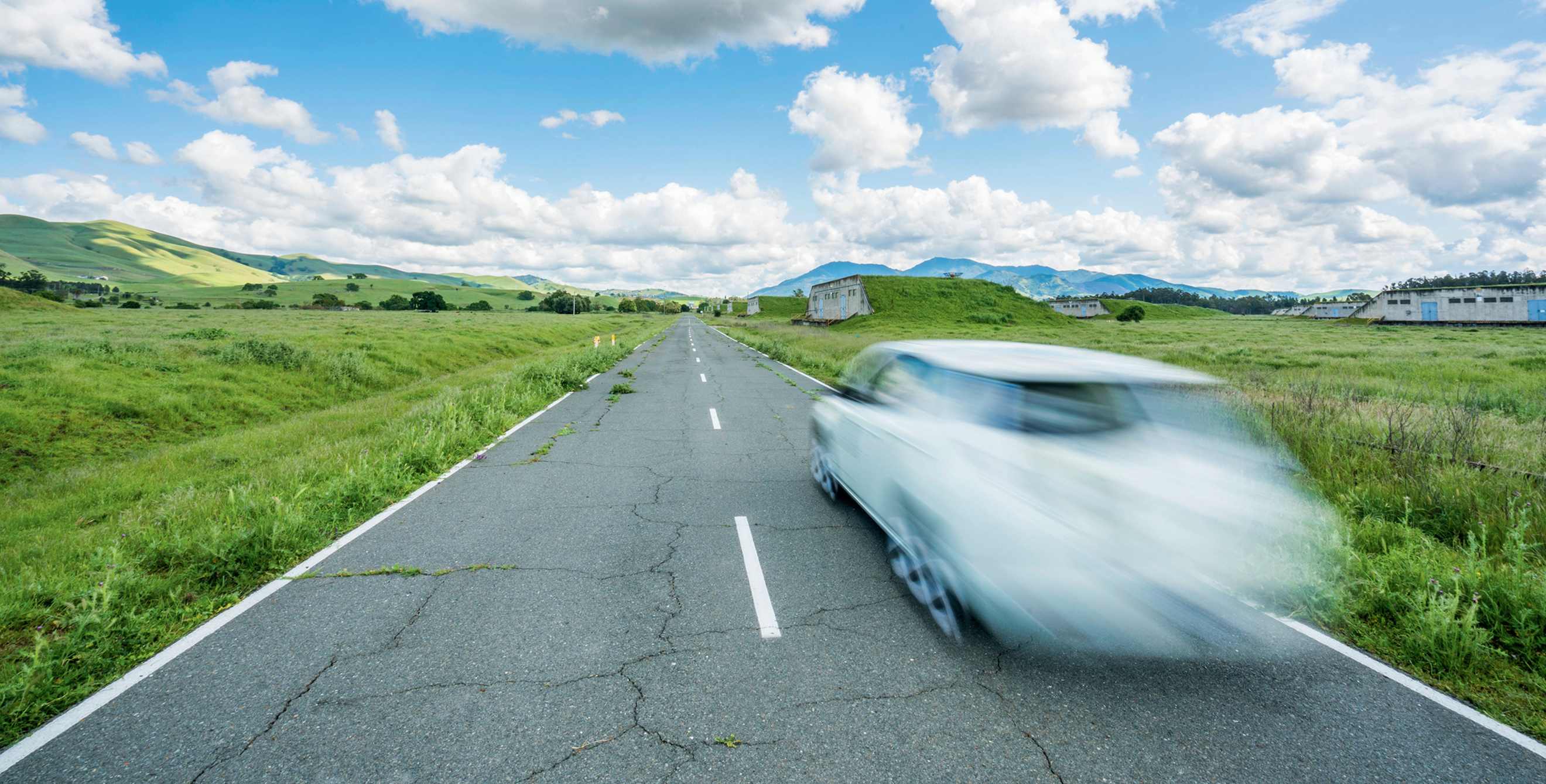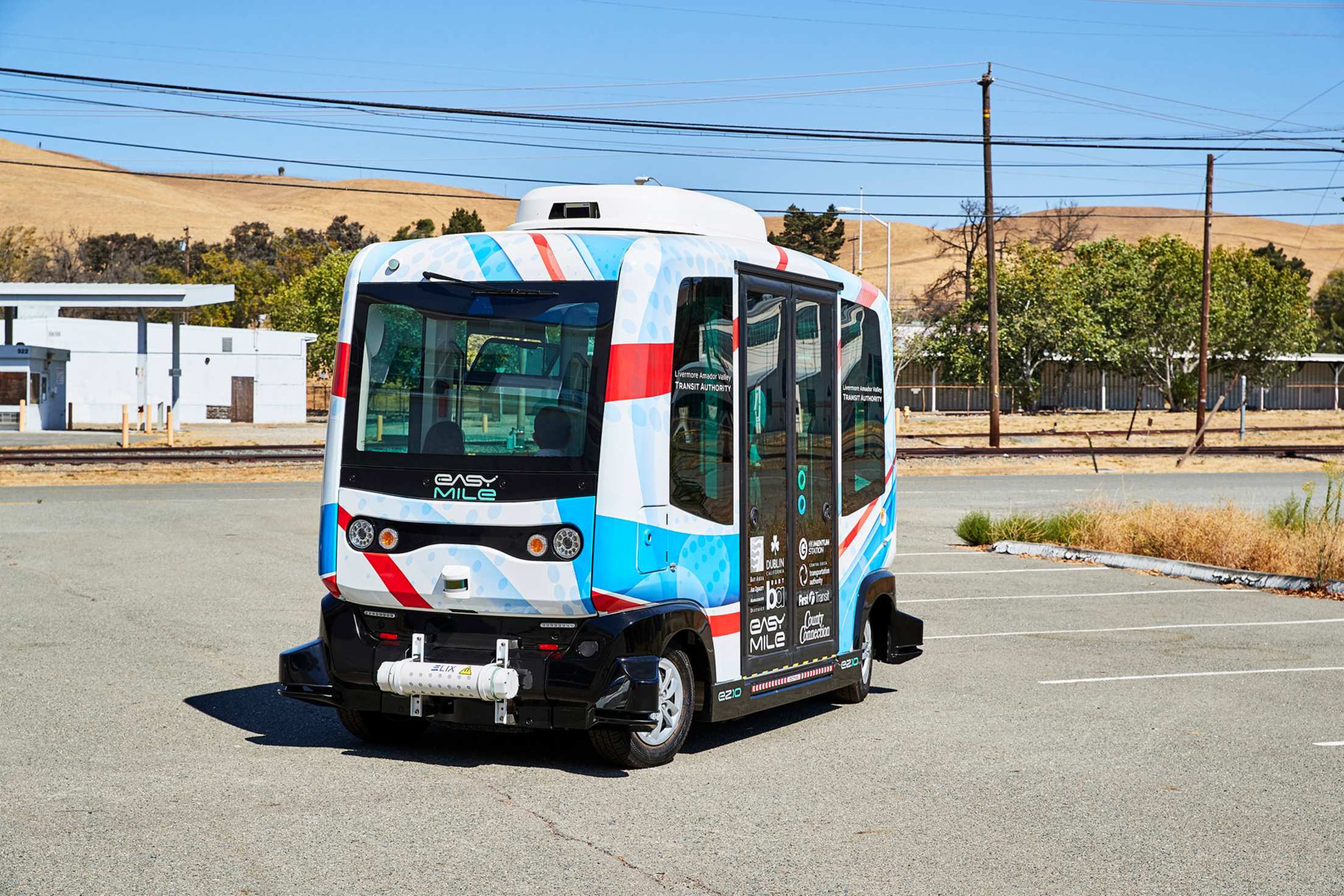
How AAA is Shaping the Future of Self-Driving Cars
The acquisition of GoMentum Station will help ensure that cars of tomorrow are safe.

The future of mobility is fast approaching, and AAA is committed to helping all of us get there safely. That’s why, in August 2018, AAA Northern California, Nevada & Utah acquired GoMentum Station, the largest testing ground for autonomous vehicle technology in the United States.
Testing the Future of Autonomous Vehicles
Located in Concord, California, east of San Francisco, GoMentum comprises 2,100 grassy acres on the former Concord Naval Weapons Station—a military base established in 1942 as an airfield and armament storage depot. Though it ceased operating as an airfield after World War II, the base remained active for over half a century, supporting military efforts in the Korean, Vietnam, and Gulf Wars. Decommissioned in the early 2000s, the base was reborn in 2014 as GoMentum Station.
The facility retains much of its original military infrastructure in the form of weathered barracks and Quonset huts. The terrain also has underpasses, overpasses, railroad crossings, and 20 miles of paved roads laid out in a grid. On any given day, autonomous vehicles from companies including Honda, Toyota, Uber, and Lyft motor around the grounds under the careful watch of engineers.
The potential upsides of autonomous technology are hard to overstate. In addition to making travel cleaner, less congested, and more efficient, self-driving cars could make it much safer.
Every year, some 1.25 million people are killed in traffic accidents around the world; another 20 to 50 million are injured. In 2017, roadway fatalities in the United States alone numbered more than 37,000. According to the National Highway Traffic Safety Administration, driver error is a contributing factor in over 94 percent of traffic collisions in the United States. Driverless technology could help reduce crashes, as long as it’s properly developed and deployed.
AAA is intent on maintaining its role as a leader in ensuring Membersʼ safety—and that of our communities at large—during a period of dramatic change. Ultimately, AAA wants to see zero traffic fatalities.
In addition to serving as a test track, GoMentum Station is a center of collaboration, a place where automakers and other transportation companies can share with government agencies their ideas on bringing advances in mobility to the world outside GoMentum’s gates. Among the vehicles tested at the facility is an autonomous shuttle designed to carry passengers short distances, created by a company called EasyMile. From the testing grounds at GoMentum Station, EasyMile rolled out the shuttle as part of a pilot program at a nearby business park. In 2019, pending further testing by city traffic engineers, it may hit the streets of San Ramon, California.
“The acquisition of GoMentum Station is the cornerstone of AAA’s efforts to create a collaborative space dedicated to the safe implementation of self-driving cars,” says Suna Taymaz, chief innovation officer of AAA Northern California, Nevada & Utah. “Ultimately, we want GoMentum to be the premier proving ground for autonomous vehicle technologies.”
To that end, AAA plans to make further investments in GoMentum Station, adding ancillary services and developing facilities that anticipate a more connected world, one where cars, traffic signals, and other transportation infrastructure can all communicate with one another. Potential additions to the test site include bike lanes, pedestrian crossings, and other common road features.

Safety First
For autonomous vehicles to deliver fully on their vast potential, they must be able to respond appropriately to unexpected events, whether it’s a bicyclist making a sudden turn or a deer jumping into traffic. Those working toward the future of transportation have to show that autonomous vehicles can be integrated safely into our everyday lives.
Attempts to do so have not been without setbacks. In March 2018, an Arizona pedestrian was struck and killed by a self-driving vehicle from Uber’s fleet. The tragedy underscored the fact that, for all the progress that’s been made in autonomous vehicle technology, there is still much work to be done.
Understandably, even as this technology continues to spread, large portions of the public remain wary of it. A 2017 AAA survey found that three-quarters of U.S. drivers were skeptical of self-driving cars, despite the enormous potential improvements in safety. Change can be daunting, and all the more so when it seems to be occurring at dizzying speed.
In some respects, though, seemingly new ideas aren’t all that new. Commercial planes have flown for decades on autopilot. Many public rail systems have driverless trains; the conductor at the helm is there in case of emergency, and to make passengers feel at ease.
The first crude experiments on driverless cars date back to the 1920s. But if you’re looking for the first robot cars to have hit the test road, most experts will point you to Navlab, a series of autonomous and semi-autonomous vehicles developed in the 1980s at Carnegie Mellon University.
In the decades since Navlab, a long list of companies, from General Motors to Google, have released or developed prototypes of vehicles with various degrees of autonomy. Those features can range from basics such as the lane-change alerts now standard in many new cars, to more sophisticated technologies allowing cars to parallel park themselves or handle the stop-and-start of rush-hour bottlenecks.
If that sounds impressive, consider what’s coming. Forecasters say that in another generation, most cars will do almost everything without our help. They'll be so independent, they won't even need owners. When we need a ride, we’ll simply summon an autonomous vehicle of our choice, by way of a Siri-like personal device. The car will show up and whisk us off onto futuristic roadways, where caravans of driverless vehicles stream along at the speed limit, with just a few feet between their bumpers.
To help prepare consumers for that future, AAA is helping familiarize the public with autonomous vehicles. That was the idea behind our first-of-its-kind pilot program: a free self-driving shuttle, sponsored by AAA, that traveled the streets of Las Vegas in 2017 and 2018. AAA has also embarked on a collaborative partnership with Torc Robotics, a pioneer in autonomous technology, with the aim of establishing a set of safety criteria for the manufacture, testing, and use of driverless vehicles.
In the next two or three decades, mobility could change as dramatically as it did in the first 30 years of the 20th century. AAA helped those early motorists and communities adapt and innovate. With the acquisition of GoMentum Station, AAA is making sure that the road to the future stays safe.